Auxiliary verbs usually accompany an infinitive verb or a participle, which respectively provide the main semantic content of the clause. An example is the verb have in the sentence I have finished my lunch. Here, the auxiliary have helps to express the perfect aspect along with the participle, finished.
Some sentences contain a chain of two or more auxiliary verbs. Auxiliary verbs are also called helping verbs, helper verbs, or auxiliaries. Research has been conducted into split inflection in auxiliary verbs. In English there are two types of auxiliary verb, primary auxiliaries and modal auxiliaries. The three primary auxiliary verbs are 'be', 'have' and 'do'. There are ten common modal auxiliary verbs and they are 'can', 'could', 'will', 'would', 'shall', 'should', 'may', 'might', 'must' and 'ought'.
The combination of helping verbs with main verbs creates what are called verb phrases or verb strings. The three primary auxiliary verbs are 'be', 'have' and 'do'. There are ten common modal auxiliary verbs and they are 'can', 'could', 'will', 'would', 'shall', 'should', 'may', 'might', 'must' and 'ought'. Modal auxiliary verbs often express the ideas of necessity and possibility. An example is the verb have in the sentence I have finished my dinner – here the main verb is finish, and the auxiliary have helps to express the perfect aspect.
There are ten common modal auxiliary verbs and they are 'can', 'could', 'will', 'would', 'shall', 'should', 'may', 'might', 'must' … This week's blog is based on auxiliary verbs. Modal auxiliary verbs are can, could, may, might, must, shall, should, will, and would. As you might have already guessed, modal auxiliary verbs are unique in that they cannot stand alone as a main verb and cannot be conjugated into any other forms. They must accompany another verb, and that verb must be in its base form . Modal verbs may also be referred to as mode verbs or modals.
The primary auxiliary verbs are be, do and have. The modal auxiliary verbs are shall, should; will, would; can, could; may, might; and must. The semi-modal verbs need and ] may be used as auxiliaries, although this is not common in contemporary English. … There are ten common modal auxiliary verbs and they are 'can', 'could', 'will', 'would', 'shall', 'should', 'may', 'might', 'must' and 'ought'.
An auxiliary verb or helping verb is a verb used with another verb to express aspect. The most commonly used primary auxiliary verbs are forms of do, be, and have. In addition, a clause can contain one or more auxiliary verbs. Some auxiliaries are usually called modal but often act to give grammatical information by forming a tense with a main verb. For this reason, some people will classifywill and would as Primary Auxiliary verbs.
That is a sensible approach because both verbs can act in both ways. The classification is then split so when they act as primary modal auxiliaries, that is what they should be called and, likewise, when they act as modal auxiliary verbs. The verbs to be, to do, and to have can be used as main verbs, but also as primary auxiliary verbs to build certain tenses or grammatical forms. The verbs to be, to do, and to have can all be used as main verbs, but they are also used as primary auxiliary verbs to build certain tenses or grammatical forms.
Yes, again I would like to remind you of the matter that all the three primary auxiliary verbs can function as the main verb to form different tenses. Here is where the English learners sometimes get confused about how it works. Modal auxiliary verbs are used to show a necessity, capability, willingness, or possibility. Unlike most verbs, there is only one form of these verbs. Typically, verb forms change to indicate whether the sentence's structure is singular or plural. Most verbs also indicate whether something happened in the past, present, or future.
This is not the case with most modal auxiliary verbs, which makes them simpler to understand and use correctly. A verb used in forming the tenses, moods, and voices of other verbs. The primary auxiliary verbs in English are be, do, and have; the modal auxiliaries are can, could, may, might, must, shall, should, will, and would.
Dare and need are tricky because they function as main verbs or modal auxiliary verbs, although their use as modal auxiliary verbs is becoming increasingly uncommon. When they function as modal auxiliary verbs, they do not conjugate and must be followed by a main verb in its base form. Let's look at some examples of each way dare and need can be used. In this case, need is functioning as a modal auxiliary verb accompanying the main verb worry.
This kind of construction is rare in modern usage. We would usually say something more like, "You do not need to worry about the quiz tomorrow," in which case need would be the main verb assisted by the primary auxiliary verb do. It is also worth noting that when need is used as a modal auxiliary verb, it will almost exclusively be used in negative sentences.
The verb that helps the main verb/finite verb to form different tenses, negative sentences, and interrogative sentences is called Primary auxiliary verb. They can be classified into the primary auxiliary verbs and the modal auxiliary verbs. The primary auxiliary verbs are be, do, and have. The primary auxiliary verbs are the most common of the bunch and are unique in that they can stand alone as main verbs and conjugate accordingly. The primary verbs in English grammar are the verbs be, have, and do—all three of which can function as either main verbs or auxiliary verbs. Primary verbs are sometimes referred to as primary auxiliaries.
The "primary" auxiliary verbs—be, have, and do—are some of the most commonly occurring verbs in English. Do is used to make main verbs negative or to form interrogative sentences, and it can also be used to add emphasis to a sentence. There are two categories of auxiliary verbs, primary auxiliary verbs and modal auxiliary verbs. A word that completes the main verb can be called either the "helping" verb or the "auxiliary" verb. This is a verb used in forming the tenses, moods, and voices of other verbs.
Auxiliary verbs used with other verbs form what are called verb phrases or verb strings. The "primary" auxiliary verbs are be, have, and do—they occur most commonly in English. Modal auxiliary verbs combine with other verbs to express ideas such as necessity, possibility, intention, and ability.
In each example below, the verb phrase is in bold and the modal auxiliary verb is highlighted. Note that the to and better of the quasi-modal verbs function as particles. The verbs dare and need function as modals only within negated verb phrases and within subject-verb inversion of the verb phrase of interrogative sentences.
Modal verbs, which may express such notions as possibility ("may," "might," "can," "could") or necessity ("must"). As auxiliary verbs, we use them before the main verbs to form negation and questions, to create emphatic forms, to form question tags and to form present and progressive tenses. The primary auxiliary verbs are 'be', 'have' and 'do'.
These verbs modify other verbs in a full verb phrase, e.g. 'is going', 'has gone', or 'did go'. Auxiliary verbs (also known as 'helping verbs') include be, do and have. They are used along with the main verb in a sentence to make questions, negative statements, passives and tenses. " do is the auxiliary verb, like is the main verb. Helping verbs are defined as verbs that help the main verb in a sentence by extending its meaning.
They add detail to the main verb and are needed to complete the structure of a sentence. They can also clarify how time is conveyed in a sentence. As a result, helping verbs are used to create the complicated progressive and perfect verb tenses. Learn about the two types of helping verbs and review examples of each. They are also some of the trickiest to master, because each can also be used as a main verb in a clause, and each is able to conjugate to reflect plurality and tense as a result. An auxiliary verb (or a helping verb as it's also called) is used with a main verb to help express the main verb's tense, mood, or voice.
The main auxiliary verbs are to be, to have, and to do. Auxiliary verbs, are helping verbs that modify the meaning of the main verbs in a clause. They are used to make tenses, interrogatives, negatives, passives, and to add emphasis.
Well, that's true provided we're talking about working in English. If you start learning a foreign language, it won't be too long before you'll be unpicking how they express tense, voice and mood. And, do you know what's a good starting point for that?
Modal verbs are auxiliary verbs like can, will, could, shall, must, would, might, and should. Modal verbs add meaning to the main verb in a sentence by expressing possibility, ability, permission, or obligation. Auxiliary verbs are used in sentence according to the rules of English tenses in order to give information about the time of the main verb. The auxiliary verb helps the main verb in expressing the time the action. The primary auxiliary verbs in English are to be, to do and to have. They can be used both as main verbs and as auxiliary verbs.
It is during our darkest moments that we must focus to see the light. This example again shows have as the main verb being helped by the auxiliary verb will to form the future tense. When a primary auxiliary verb is not functioning as an auxiliary, it can be accompanied by other auxiliary verbs, just like any other main verb can. When this occurs, perfect aspect is superior to progressive aspect, e.g. If the negative forms can't, don't, won't, etc. are viewed as separate verbs , then the number of auxiliaries increases.
The verbs do and have can also function as full verbs or as light verbs, which can be a source of confusion about their status. The modal verbs form a subclass of auxiliary verbs. Modal verbs are defective insofar as they cannot be inflected, nor do they appear as gerunds, infinitives, or participles. Without the help of a 'be' verb, no sentence of passive voice can be formed. As a primary auxiliary verb, it helps form the passive voice of different tenses.
We use the primary auxiliary 'have' to form the perfect tenses. We say «I have eaten some chocolate» or «he has been to Sevilla». We could also say «I have been sitting here for ten minutes». Remember each perfect tense has a different use.
We use the perfect continuous tenses to communicate the duration of an action up to a point in time. In both these cases the verb is followed by the past participle of a lexical or main verb and used to form what is called the passive voice. The passive is often used when the doer of the action is unimportant or unknown and to lay stress on the action itself and the object of the action. In sentence e., the auxiliary be is used alongside the auxiliary have so this sentence shows both perfect aspect and passive voice.
In English, we use modal auxiliary verbs to express ideas such as possibility, ability, obligation and compulsion. Auxiliary, in grammar, a helping element, typically a verb, that adds meaning to the basic meaning of the main verb in a clause. Auxiliaries can convey information about tense, mood, person, and number.
An auxiliary verb occurs with a main verb that is in the form of an infinitive or a participle. Auxiliary verbs are helping verbs that have no meaning on their own but give functional and grammatical meaning to the main verbs. In contrast to the main verbs, they don't expresses an action. See the section on Conditional Verb Forms for help with the modal auxiliary would.
What Is Auxiliary Verb And Examples The shades of meaning among modal auxiliaries are multifarious and complex. Most English-as-a-Second-Language textbooks will contain at least one chapter on their usage. For more advanced students, A University Grammar of English, by Randolph Quirk and Sidney Greenbaum, contains an excellent, extensive analysis of modal auxiliaries. My mother seemed to be wondering – some quasi-auxiliaries exist, quasi in the sense that they consist of a small cluster of words rather than a single verb.
Here, is the finite verb marked for person, number and tense, followed by [preposition to + base form + -ing form]. If you had analysed as an auxiliary followed by a base form and an –ing form, you would not be incorrect. The UCL internet grammar gives a short list of quasi-auxiliary verbs. Since modal auxiliary verbs do not have a past tense form, we can use the modal auxiliary along with the word 'have' and a past participle. Past participles typically end in -d, -ed, -n, or -en, creating the past tense 'wished, looked, taken,' and so forth. Let's take a look at an example in the present tense.
Modal auxiliary verbs like can, may, ought, shall, and wood are used to suggest an impending or possible upcoming action. Learn to identify modal auxiliary verbs, understand their purpose, and indicate past tense with the provided examples. In this example, has and been are both auxiliary verbs that form the present perfect continuous tense with the main verb planning. Again, none of the three verbs would be correct or make sense without the others in this context.
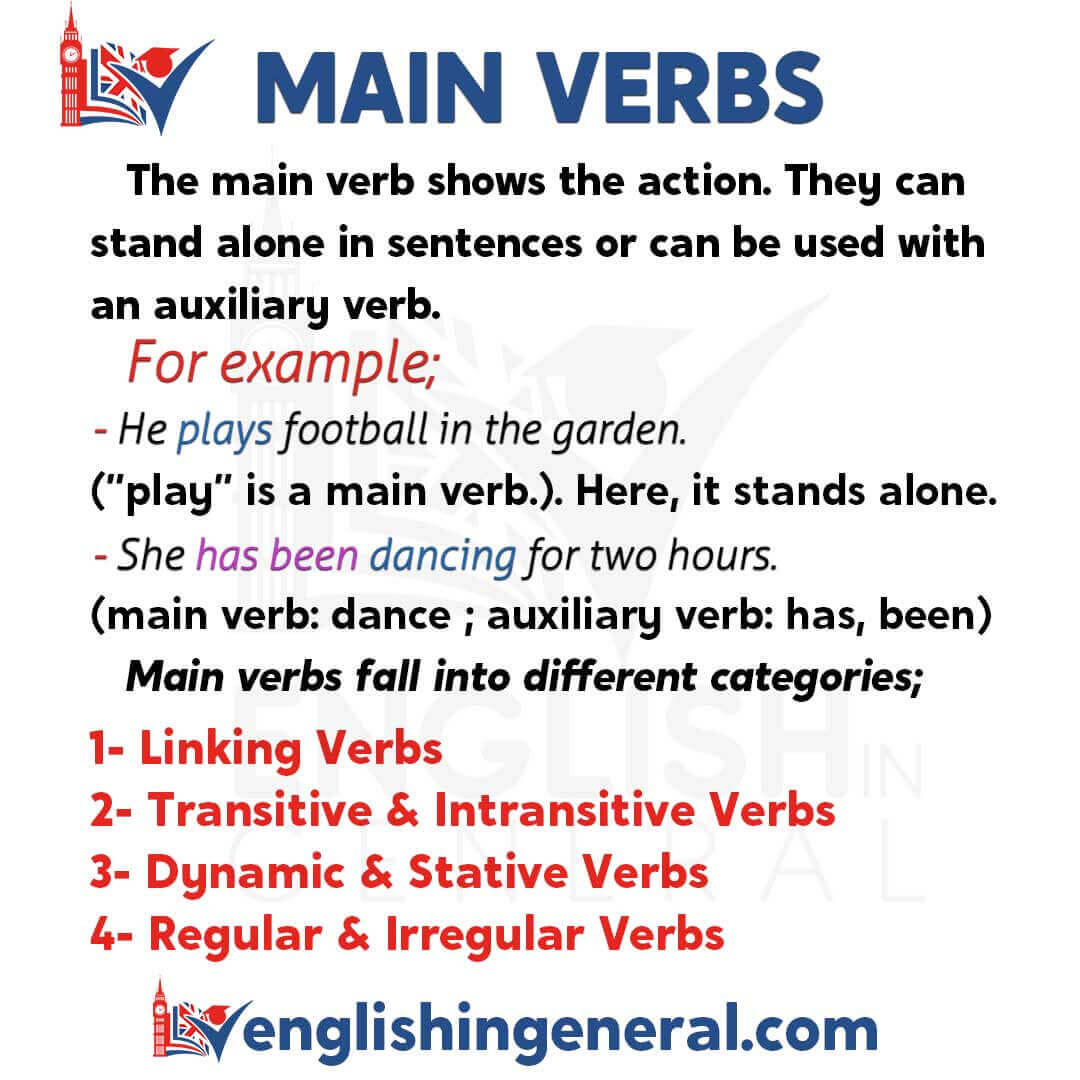

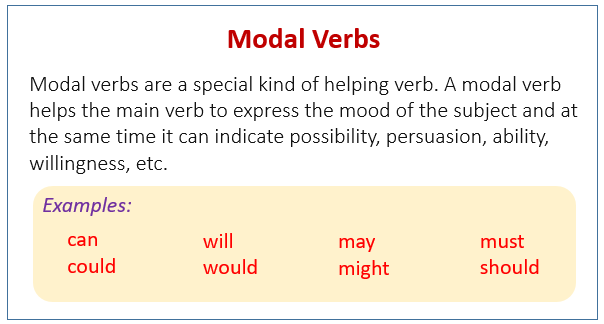









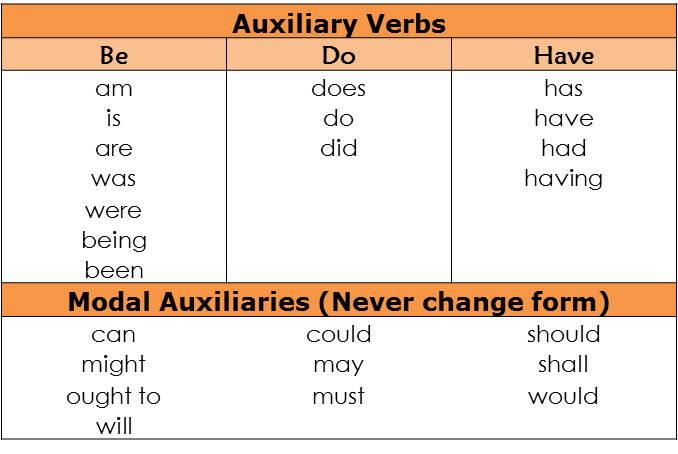




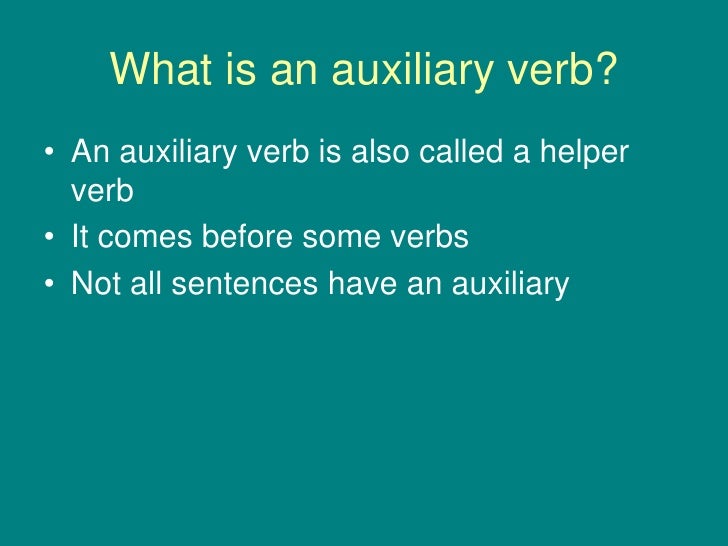

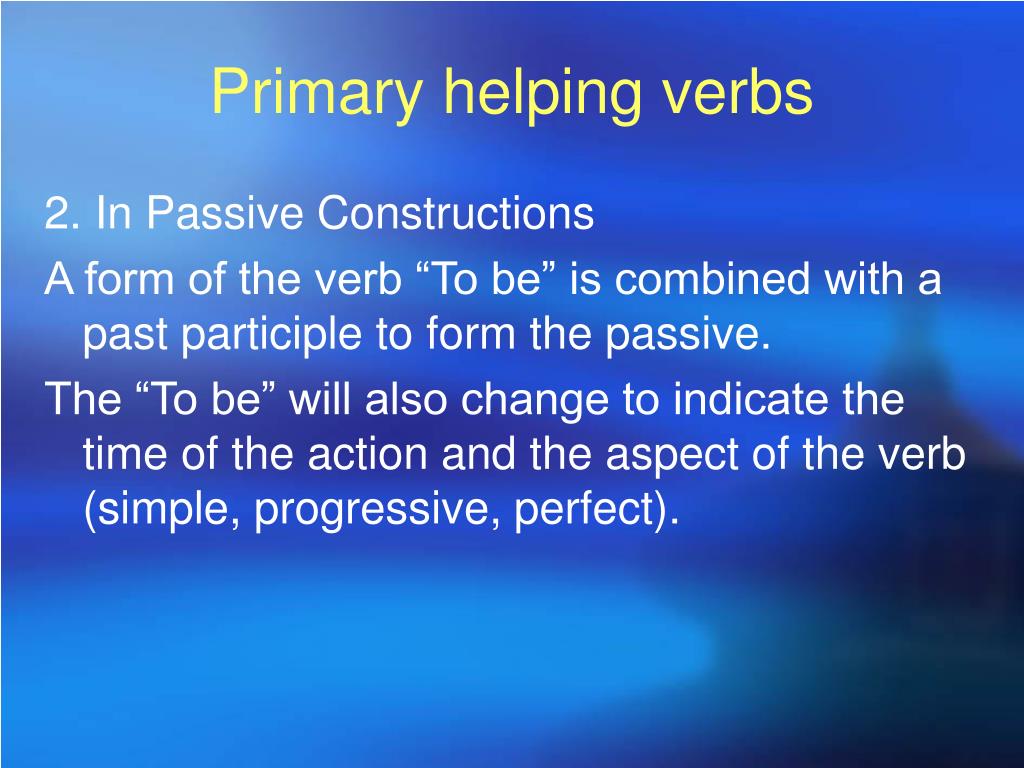

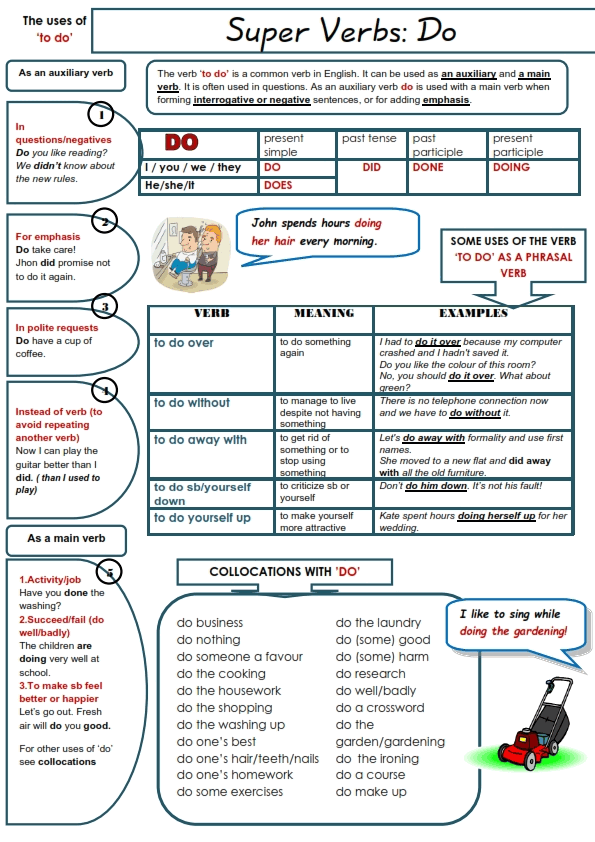
No comments:
Post a Comment
Note: Only a member of this blog may post a comment.